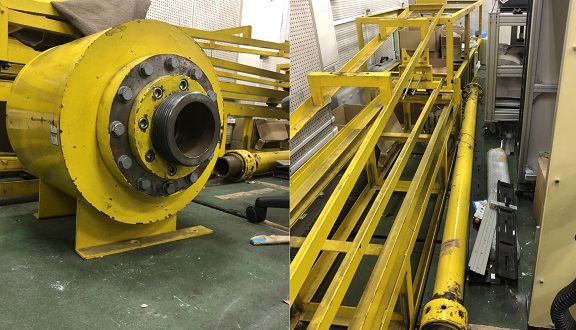
Detonation in a short tube
text

text

Amphibious aircrafts are aircrafts that are designed to have the capability to land on and take off from both land and water. More specifically, they are seaplanes or flying boats with retractable landing gear.
With the advance in technology of land based aircraft, allowing non-stop trans-ocean flights, amphibious aircrafts, seaplanes and flying boats were forced to gradually becoming obsolete. However, these aircrafts still play a small, but a respectable role in the aviation world. Recently, the number projects of amphibious aircraft in the light-sport aircraft industry is increasing and some countries show interest in purchasing large amphibians for search and rescue or sea surveillance.
With the arising demand in amphibious aircrafts, we sense the need to research the potentials of these unique aircrafts. Currently we are cooperating with Aircraftica, an aircraft design company in Poland and Warsaw University of Technology to design and develop a two-seat light sport amphibious aircraft.

Detonation can yield a higher heat release rate but lower entropy production compared to deflagration. The detonation-based thermal cycle can reach a higher thermal efficiency than the Brayton cycle based on deflagration, which is used in conventional power devices.
Rotating Detonation Engine (RDE), has been one of the solutions that enhance the thermal efficiency producing energy from combustor. RDE is a continuous flow device where reactants are fed axially through an annulus and a detonation wave propagates circumferentially around inside the annular combustion chamber. RDE yields a much higher operating frequency, steadier outlet flow, and fewer initiation losses than that of other detonation engines such as Pulse Detonation Engine (PDE).However, the stability of rotating detonation waves when operating RDE has not been studied enough. The detonation waves also affect wall temperature, enhancing it over 3000 K when hydrogen is used as fuels when run for a long period of time. In order to put RDE into practical use, our laboratory researches the ability of RDE thrust, flow field of inside RDE, and so on by experiment and numerical calculation.

“Morphing wing technology” is hoped to be a breakthrough in the aerospace industry to drastically increase aircraft efficiency. “Morphing wing” is referred to as a flexible wing that can be deformed seamlessly during flight. This enables the wing shape to be freely changed during flight, which allows controlling the amount of lift on the wing.
Here at aerospace and combustion laboratory, we look forward to improving the aerodynamic efficiency of amphibious aircrafts or STOLs (short take-off and landing aircrafts) using this morphing wing technology. Because of their unique capabilities, they need high lift devices on their wings. We think that morphing wing technology has the potential to improve the mission adaptive capabilities of amphibious aircrafts and STOLs.
This year we have started a collaboration with Institute of Fluid Science in Tohoku University. We calculate the aerodynamic performance of a wing with pneumatic control and morphing flaps using CFD.

Currently, at domestic universities, the number of experimental apparatuses capable of these experiments is small and the production year is also old, the results of experiments and numerical calculations in the hypersonic region of Mach number 10 to 20 are largely different.
In this research, we aim to create a free piston shock tube for experiments on hypersonic shock waves with Mach number of about 10 ~ 20, and verify its performance. We will proceed with research to generate supersonic shock waves and experiment the luminescence characteristics by radiation behind them using experimental equipment further demonstrated. As a result, we can present problems and complements of experimental method, experimental equipment and numerical analysis for future hypersonic shock wave related experiments.